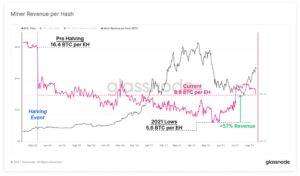
NFT18 has published its annual report for 2023 regarding the performance and key metrics of the NFT market.
GM
Our 2023 NFT Market Report is live, get your free or pro copy here : https://t.co/3ry9UCzmDa
What will you learn in this report?
2023 has been a year of massive decrease for NFT markets. Despite the bear market and massive losses, community remained active and more… pic.twitter.com/rqCOP3uxcV
— NFT18 (@nft18_reporting) February 1, 2024
This is a long report that analyzes many aspects related to the NFT market, and in particular its performance during the past year.
The report on the NFT market in 2023
The report highlights how 2023 has been a year of significant decline for the NFT markets, but despite the bear market and massive losses, the community has remained active.
In particular, despite a 62% reduction in the overall volume of trades compared to 2022, which dropped to 10 billion dollars, the number of active wallets has only decreased by 10% compared to 2022. In other words, over the years, there have still been a significant 2 million active addresses.
These are effectively the results of the burst of the speculative bubble of 2021/2022, with a further 67% drop in the average price of individual NFTs.
The total loss of value was 1 billion dollars, concentrated on the NFTs of the most advertised projects during the bull run.
Furthermore, art is the sector that has lost the largest market share (-17%).
Despite 2023 being an overall challenging year, the fourth quarter has shown encouraging signs of recovery at all levels, both in the number of active wallets and in the traded volumes.
The speculative bubble
Taking as a reference the monthly trading volume on OpenSea, already in August 2021 daily volumes in some cases rose above 200 million dollars, with a peak of even over 400 million at the beginning of May 2022.
With the collapse of the crypto markets in mid-May 2022, following the implosion of the Terra/Luna ecosystem, the speculative bubble of NFTs has also burst.
It is enough to say that by the end of 2022, the daily trading volume on OpenSea had dropped below 10 million dollars, and during 2023 it has decreased even to 1 million.
Starting from November, however, with the recovery of crypto markets, volumes have slightly increased, reaching nearly 7 million dollars on December 15th. On average, they are now between 2 and 4 million dollars per day.
The changeover between OpenSea and Blur
On Blur, which has become the world’s leading marketplace in terms of NFT trading volumes, the peak occurred on February 20, 2023, with nearly $100 million in daily trading volumes. Blur was launched during an already burst speculative bubble, in the midst of a bear market, and effectively replaced the trading volumes of OpenSea.
Although in October the daily trading volumes on Blur also dropped significantly, reaching around 3 million dollars, starting from November they have risen to an average between 10 and 20 million.
The NF18 report talks about the real vampirization of OpenSea users by Blur, but also about the growth of layer-2 solutions such as Polygon, Arbitrum, Optimism, and Base in relation to Ethereum.
In addition, it talks about Solana’s resurrection, after the collapse of 2022 caused first by Terra and then by FTX.
NFT18: the state of health of the NFT market in 2023
The report notes that, despite strong and widespread declines, the NFT market in 2023 showed signs of resilience.
The turning point is the increasing use of this technology for useful purposes, such as in the Gaming world and in the Utility sector.
It is not by chance that the NFT sector that has suffered the greatest declines is that of art.
In other words, speculation has been greatly reduced, which was the very cause of the 2021/2022 bubble, while what remains are the concrete uses.
It is worth noting that the overall interest in NFTs has decreased significantly compared to the peak of early 2022, but it has not collapsed to the levels of 2020. In fact, it has returned to the levels of mid-2021, when the major bull run had already begun but had experienced a temporary slowdown due to the decline in crypto markets after China’s ban.
Even China, despite a strong decline in interest, is still the country with the highest interest in NFTs.
The future evolution of the sector
The future of NFTs seems to be mainly linked to the world of collectible digital objects, rather than artistic NFTs.
According to the report, the current situation would be healthier compared to the bubble one, and it would indicate a much more solid restart based on concrete uses rather than mere speculation.
For example, the volumes of those exchanges suspected of being mere covers for money laundering have been greatly reduced, and the downward trend in the average price of individual NFTs has effectively stopped since mid-2023.
In other words, the worst seems to be over, and many of the most painful points of this market seem to have diminished to the point of becoming almost irrelevant.
Perhaps the true NFT market is just beginning now, unless a new speculative bubble inflates sooner or later.



















